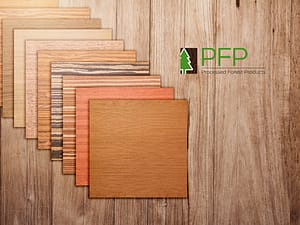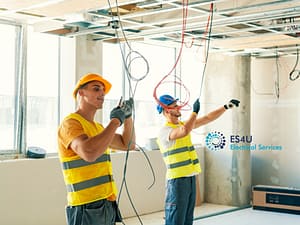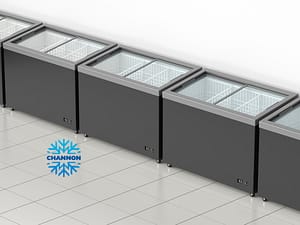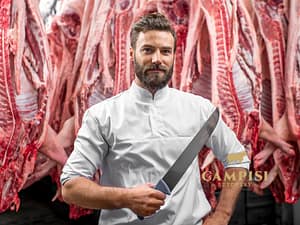Goalkeepers have one of the most demanding roles on the soccer field, requiring a unique set of skills that go beyond what outfield players typically develop. From sharp reflexes and quick reaction times to strong hands and precise footwork, a goalkeeper’s training must be tailored to meet these specific demands. To excel in this role, goalkeepers need specialised equipment that not only protects them during practice but also enhances their performance.
Among the most essential pieces of equipment are goalkeeper gloves (GK gloves), which provide the necessary grip and protection for handling the ball in various conditions. Additionally, tools like rebounders are crucial for simulating the unpredictable nature of in-game scenarios, helping goalkeepers sharpen their reflexes and reaction times. The right combination of soccer training equipment can make a significant difference in a goalkeeper’s development, enabling them to perform at their best during matches.
Essential Goalkeeper Gloves (GK gloves) for Training
Importance of High-Quality Goalkeeper Gloves:
Investing in high-quality goalkeeper gloves is essential for any serious goalkeeper, as they play a critical role in both protecting the hands and improving ball handling. The primary functions of GK gloves are to provide a secure grip on the ball, absorb the impact of powerful shots, and protect the fingers and palms from injury. Quality gloves are made with durable materials that withstand regular use, offering a balance of comfort, flexibility, and durability.
In training, where repetition and intensity are high, the right goalkeeper gloves can make a significant difference. Gloves with superior grip technology help goalkeepers catch and hold onto the ball, even in wet or slippery conditions. Meanwhile, gloves with finger protection features, such as spines or reinforced padding, can prevent hyperextension injuries, which are common in goalkeeping. Ultimately, the right pair of GK gloves provides the confidence and protection needed to focus on improving skills without worrying about injury.
Choosing the Right GK Gloves for Training:
Selecting the best GK gloves for training involves considering several factors, including fit, weather conditions, and the intensity of the training sessions. Here are some tips to guide your choice:
- Fit: The gloves should fit snugly but not too tightly. A good fit ensures that the gloves move with your hands, providing better control and comfort. Many goalkeepers prefer gloves with adjustable wrist straps to secure the fit and prevent the gloves from slipping during play.
- Grip: Depending on the weather conditions and playing surface, different types of grip may be needed. For example, gloves with latex palms offer excellent grip in dry conditions, while special wet-weather gloves are designed to maintain grip even in the rain.
- Durability: Training often involves more wear and tear than match play, so it’s important to choose gloves that can withstand the rigours of daily use. Look for gloves made from durable materials with reinforced stitching to ensure they last through intensive training sessions.
- Protection: Some GK gloves come with built-in finger protection systems, which are especially useful for younger players or those recovering from finger injuries. These gloves help prevent hyperextension while still allowing for flexibility and movement.
Using Rebounders to Improve Reflexes and Reaction Time
How Rebounders Enhance Goalkeeper Training:
Rebounders are an invaluable tool in goalkeeper training, designed to simulate the unpredictable and rapid ball movements that occur during a match. By bouncing the ball back at varying speeds and angles, rebounders help goalkeepers develop quicker reflexes and improve their reaction times. This unpredictability forces goalkeepers to stay alert and adapt to the ball’s movement, closely mimicking real-game scenarios where they must react in split seconds.
Effective Drills with Rebounders:
To maximise the benefits of using a rebounder in training, goalkeepers can incorporate a variety of drills that target specific skills:
- Reaction Catch Drill: Position the rebounder a few meters away from the goalkeeper. Have a coach or teammate throw the ball at the rebounder so it rebounds unpredictably. The goalkeeper must react quickly to catch or deflect the ball.
- Diving Save Drill: Place the rebounder at an angle to the goalkeeper and have balls thrown at it from different heights. The goalkeeper practices diving to catch or punch the rebounded ball, improving their diving technique and response time.
- Footwork and Positioning Drill: The rebounder can also be used to practice footwork. The goalkeeper starts in a central position and, after each rebound, must quickly move to intercept the ball, practicing side-to-side movement and proper positioning.
These drills, when combined with the use of quality goalkeeper gloves (GK gloves), create a comprehensive training routine that enhances a goalkeeper’s readiness and performance on the field.
Additional Equipment to Boost Goalkeeping Skills
Reaction Balls and Their Benefits:
Using reaction balls in training helps goalkeepers develop sharper reflexes and faster reaction times, which are crucial for making saves in high-pressure situations. Incorporating reaction balls into regular training sessions can also help improve a goalkeeper’s ability to focus, as they must stay mentally alert to track the ball’s erratic movements.
Drill Example: Stand a few meters away from a wall and throw the reaction ball against it, catching it as it rebounds unpredictably. This drill can be done solo or with a coach who throws the ball for the goalkeeper to catch. Practicing this regularly will sharpen reflexes and improve the goalkeeper’s ability to react to shots from close range.
Agility Ladders and Cones for Footwork:
Footwork is a fundamental aspect of goalkeeping, as it enables goalkeepers to move quickly and efficiently around the goal area. Agility ladders and cones are excellent tools for improving foot speed, balance, and coordination, all of which are essential for effective goalkeeping.
Agility Ladders: These are used to practice quick, precise foot movements. Goalkeepers can perform various drills by stepping in and out of the ladder’s rungs, focusing on speed and accuracy. Agility ladder drills help improve lateral movement, allowing goalkeepers to cover the goal more effectively.
Cones: Cones are versatile training tools that can be used to set up various footwork drills. For example, placing cones in a zigzag pattern allows goalkeepers to practice changing direction quickly while maintaining balance and control. This is particularly useful when moving to intercept crosses or making diving saves.
Drill Example: Set up an agility ladder followed by a line of cones. The goalkeeper should quickly move through the ladder, focusing on foot speed, and then weave through the cones, practicing sharp turns and changes in direction. This drill simulates the quick footwork needed to move from one side of the goal to the other.
Maintaining and Caring for Your Goalkeeper Equipment
Proper Care for Goalkeeper Gloves (GK gloves):
To ensure that your goalkeeper gloves (GK gloves) last through many training sessions and matches, it’s important to care for them properly. Gloves can wear out quickly if not maintained correctly, leading to reduced grip and protection.
Cleaning: After each use, gently rinse the gloves in lukewarm water to remove dirt and sweat. Avoid using harsh detergents or scrubbing the gloves, as this can damage the latex. Instead, use a mild soap if necessary, and gently squeeze the gloves to remove excess water.
Drying: Never wring out or twist the gloves, as this can damage the materials. Instead, allow the gloves to air dry naturally at room temperature, away from direct sunlight or heat sources, which can cause the latex to crack or become brittle.
Storage: Store your GK gloves in a cool, dry place when not in use. Keeping them in a glove bag or wrapping them in a towel can help protect the gloves from dust and damage. It’s also important to keep the gloves flat or slightly curved in their natural shape to prevent creasing.
By following these care tips, you can extend the lifespan of your goalkeeper gloves and maintain their performance, ensuring you’re always ready for training and matches.
Ensuring the Longevity of Your Rebounder:
A rebounder is a durable piece of equipment, but proper maintenance is essential to ensure it remains effective over time. Regular inspection and care will help prevent wear and tear, allowing the rebounder to continue providing reliable training.
Inspection: Regularly check the rebounder’s netting for any signs of wear, fraying, or damage. The tension of the net should be tight enough to rebound the ball effectively but not so tight that it puts undue stress on the frame. If you notice any damage, repair or replace the netting as needed.
Cleaning: Keep the rebounder clean by wiping down the frame and net with a damp cloth. This helps remove dirt and debris that could wear down the materials over time. If the rebounder is used outdoors, ensure it is dried properly before storage to prevent rusting or deterioration of the frame.
Storage: Store the rebounder in a dry, sheltered area when not in use. If the rebounder is foldable, make sure it is folded correctly to avoid damaging the frame. Keeping the rebounder out of direct sunlight when not in use can also prevent material degradation.
With proper care and maintenance, your rebounder will remain a valuable tool in your goalkeeper training regimen, helping you improve your reflexes and reaction time over the long term.
Conclusion: Elevating Your Goalkeeper Training with the Right Equipment
Recap of Key Equipment for Goalkeepers:
In summary, effective goalkeeper training requires the use of specialised equipment that addresses the unique demands of the position. High-quality goalkeeper gloves (GK gloves) are essential for protection and performance, providing the grip and durability needed to handle the ball confidently. Rebounders play a critical role in enhancing reflexes and reaction times, simulating the unpredictable movements that goalkeepers must be prepared to face during matches.
Additional tools like reaction balls, agility ladders, and cones further enhance a goalkeeper’s skill set by improving hand-eye coordination, footwork, and overall agility. Together, these pieces of equipment create a comprehensive training program that prepares goalkeepers for the challenges they will encounter on the field.
Final Thoughts on Investing in Quality Equipment:
Investing in quality training equipment is crucial for goalkeepers who want to elevate their game. By selecting the right GK gloves, rebounders, and other tools, and by maintaining them properly, you can ensure that your training sessions are as effective as possible. Quality equipment not only enhances your performance but also helps prevent injuries, allowing you to focus on developing your skills and achieving your goals.








